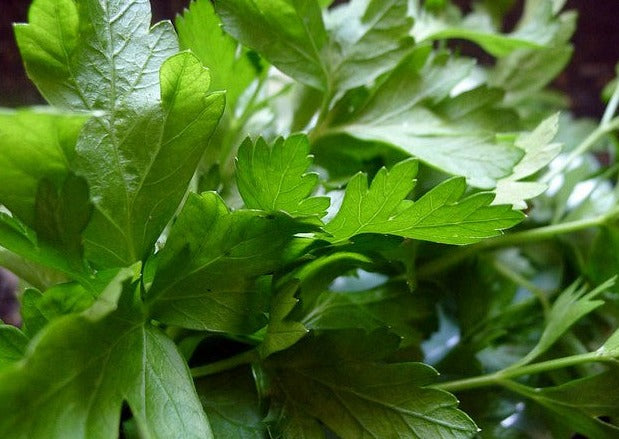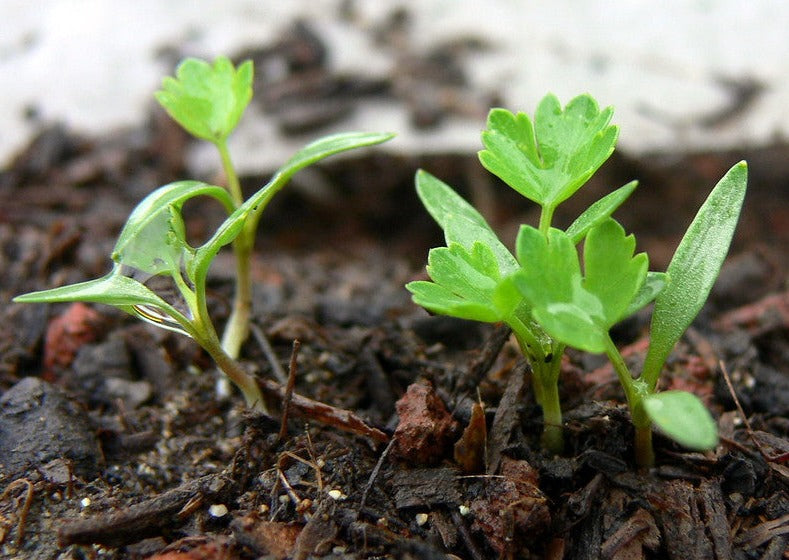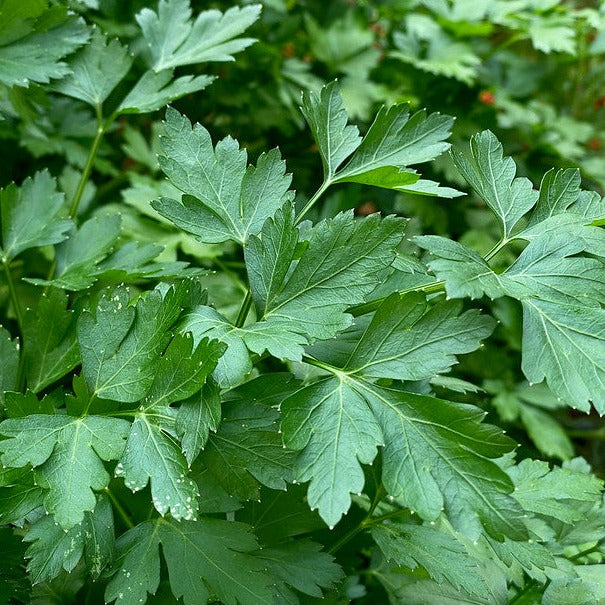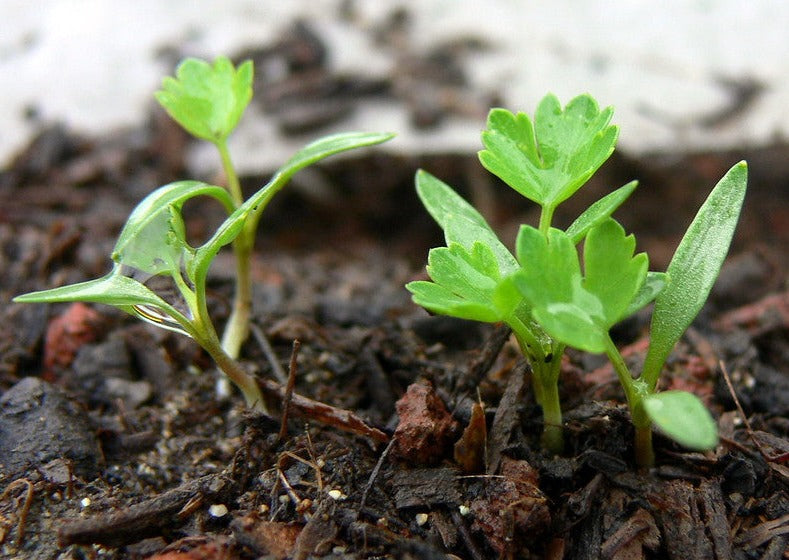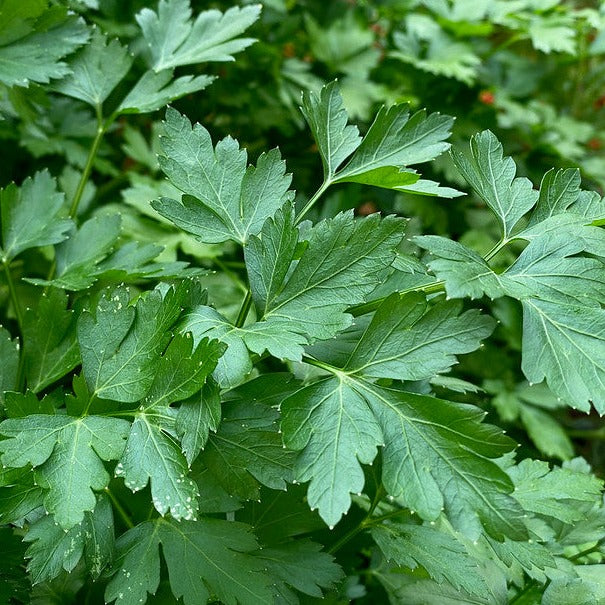Matches Seeds
Dark Green Italian Parsley
Dark Green Italian Parsley
Couldn't load pickup availability
Dark Green Italian Parsley
Petroselinum crispum
Description: Dark Green Italian Parsley is a culinary delight, prized for its robust flavor and lush, deep green foliage. This variety of parsley features flat, serrated leaves that are perfect for garnishing, seasoning, and adding a fresh, vibrant touch to your dishes.
Growing Instructions/ Direct Sow:
- Soil: Plant in well-drained soil rich in organic matter.
- Sunlight: Requires full sunlight for optimal growth.
- Planting: Sow seeds directly into the garden bed or in containers, 1/4 inch deep.
- Watering: Keep soil consistently moist, but avoid waterlogging.
- Maintenance: Trim regularly to encourage new growth and prevent flowering.
- Harvesting: Leaves can be harvested as needed once the plant is established.
Usage Tips:
- Add fresh parsley to salads, soups, sauces, and marinades for a burst of flavor.
- Garnish your favorite dishes with finely chopped parsley to enhance visual appeal.
- Dry excess parsley leaves for later use in seasoning blends or teas.
Harvest Time: Approximately 70-80 days after sowing.
Package Contents: 1 gram about 450 seeds per packet
Avoid overwatering to prevent root rot when plant is larger.
Store seeds in a cool, dry place away from direct sunlight.
Growing parsley indoors.
Growing parsley indoors can be a rewarding experience, providing you with fresh herbs year-round. Here's a step-by-step guide on how to grow parsley indoors:
-
Choose the Right Variety: There are two main types of parsley: curly leaf parsley and flat-leaf (Italian) parsley. Flat-leaf parsley tends to have a stronger flavor and is preferred by many cooks. Choose the variety that suits your taste preferences.
-
Select a Suitable Pot: Choose a pot that is at least 15 inches deep with drainage holes at the bottom. Parsley has a long taproot, so deeper pots are better. Make sure the pot is wide enough to accommodate the spreading nature of parsley.
-
Prepare the Soil: Use a well-draining potting mix with organic matter added. You can also mix in some compost for added nutrients. Ensure the soil pH is around 6.0 to 7.0, which is optimal for parsley growth.
-
Planting Seeds or Seedlings:
- If planting seeds: Sow the parsley seeds about ¼ to ½ inch deep in the soil. Space the seeds about 2-3 inches apart.
- If using seedlings: Gently transplant the seedlings into the prepared pot, making sure to cover the roots with soil and water thoroughly.
-
Location and Light: Place the pot in a location that receives at least 6-8 hours of sunlight per day. Parsley prefers bright, indirect light, so a sunny windowsill is ideal. If natural light is insufficient, you can supplement with grow lights.
-
Watering: Keep the soil consistently moist but not waterlogged. Water the parsley whenever the top inch of soil feels dry to the touch. Ensure proper drainage to prevent root rot.
-
Temperature and Humidity: Parsley thrives in temperatures between 65°F to 75°F (18°C to 24°C). Maintain moderate humidity levels around the plant. Placing a tray filled with pebbles and water beneath the pot can help increase humidity.
-
Fertilizing: Feed the parsley with a balanced, water-soluble fertilizer every 4-6 weeks during the growing season. Avoid over-fertilizing, as it can lead to weak growth.
-
Pruning and Harvesting: Regularly prune the outer leaves of the parsley plant to encourage new growth from the center. Harvest parsley leaves as needed, starting from the outside and working your way in. Use sharp scissors or pruning shears to cut the stems just above the leaf junctions.
-
Pest and Disease Control: Keep an eye out for pests such as aphids, spider mites, and whiteflies. If you notice any infestation, gently wash the plant with soapy water or use organic insecticidal soap. Ensure good air circulation around the plant to prevent fungal diseases.
By following these steps, you can successfully grow parsley indoors and enjoy its fresh flavor in your culinary creations throughout the year.
Share
